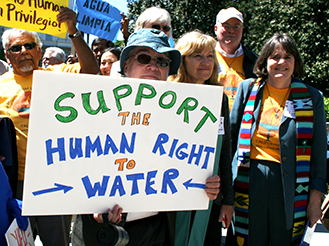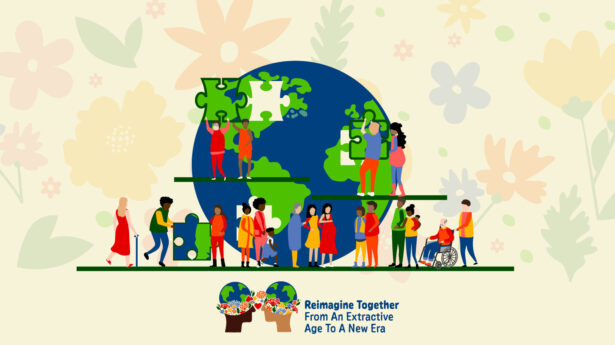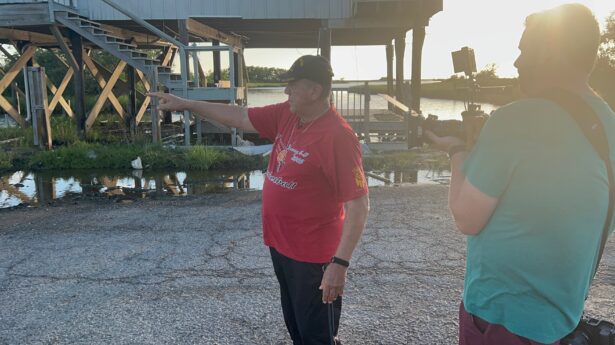The Unitarian Universalist Service Committee advances human rights through grassroots collaborations.
How Do You Measure Change?

April 6, 2015
Tracking progress in Haiti
This article originally appeared in the Winter/Spring 2015 issue of Rights Now.
Measuring social change is infinitely complex. It’s an attempt to capture human advancement, a process of figuring out whether to focus on immediate results, long-term outcomes, or broader change. UUSC navigates this terrain by reflecting on the past, assessing progress, and planning ahead. Our overarching goal is to map the change resulting from our work and demonstrate how the resources invested in partner programs lead to actual access to human rights for people throughout the world. To do so, UUSC is pioneering the Human Rights Trajectory Change Tool (HRTCT), which we’ve put to use tracking change in Haiti.
Let’s break down how the tool works. The dominant method of visualizing social change has been to work through a logical chain, translating inputs and activities into immediate outputs, short- to medium- term outcomes, and longer-term impact. Our tool brings it to a new level, capturing outputs, outcomes, and impact in a linear manner over a period of time. This ensures balance between measuring success by the numbers and by the stories, taking into account the goals and the ways that we reach them. Another key: the tool is not an end in itself, but rather a way to work with our partners to create shared learning and make our programs more effective.
This tool has been developed and honed over the past several years to help us identify the impact of our work. After laying a foundation for the tool with partners in Kenya in 2012 and piloting a more expansive impact assessment with partners in Bolivia, Ecuador, and Peru in 2013, we wanted to take it up a notch. We developed a complementary tool to help us assess and communicate not only our contribution to the work of partners but also the multiplying effect of partner efforts in their communities. In July 2014, we launched the HRTCT in Haiti with a one-day workshop, held in Port-au-Prince, for eight of our partners.
UUSC’s most recent work in Haiti started in the aftermath of the 2010 earthquake that killed approximately 230,000 people and displaced 1.5 million people. Since then, UUSC has been at the forefront of ensuring adequate relief, sustainable livelihoods, and access to rights for people affected by the disaster. During the last five years, UUSC’s program in Haiti has directly benefited tens of thousands of people through food sovereignty, gender-based violence prevention, livelihood training, child protection, and trauma recovery projects. The July workshop was key to ensuring that we capture in detail the program’s impact through a collaborative process.
Facilitated by UUSC staff, the workshop provided an opportunity to sit down with each partner, clarify how we are measuring progress, and hear how partners want to take their projects to the next level. We are combining all of the quantitative information with the qualitative stories and narrative in order to get as comprehensive a picture as possible of the partners’ impact. The visualization that we create of the trajectory of change will also be made available to partners as a way to raise further funds.
Following the workshop, we have been in continuous communication with partners about gathering data and refining how we measure success at the project level. Lutte Pou Chanjman (LPC), one of our partners in helping people heal from trauma, offers quality local resources for using the Community Resiliency Model (CRM), which is a set of skills developed by the Trauma Resource Institute, another UUSC partner, to treat the often debilitating effects of trauma. Over the past two years, UUSC supported LPC in their efforts to facilitate healing for people affected by the earthquake and to build resilience for future generations through two projects.
As a first step in the HRTCT process with LPC, we collected data on project outputs and outcomes to understand improved well-being at the community level. Outputs were defined at two levels: direct output as measured by the number of local people trained in CRM skills by LPC staff and indirect output as measured by the number of community members to whom services were provided by the trainers. Using a variety of measurements, the outcome tracks how the well-being of participants is improving.
In addition, together with LPC, we also collected qualitative stories of change that demonstrated increases in well-being at the individual level. Here’s one, in the words of an LPC staff member:
“There were three participants, in the first batch, who were agriculturists. Prior to the training, a big river flooded and ravaged their garden during Hurricane Chantal. Two of them decided to abandon the garden because they sensed defeat as they registered a huge loss of money, effort, and time. After the CRM training, two of them decided to go back to the garden and to their community. Once they went back and started working, they also convinced the other colleague, and the three men started working again in their garden and regained faith in their ability to have control over their lives and pursue their dreams.”
All of the information gathered during the HRTCT process will be synthesized for an expansive view of the difference our work — and your support — is making on the ground in Haiti. Impact assessment is essentially reciprocal learning, and we embark upon it recognizing that ownership of the impact resides with our partners. But we deeply honor all the people who contribute to the collective impact we clearly see emerging.

